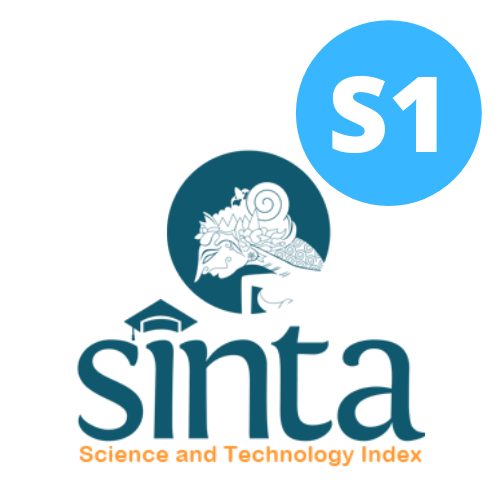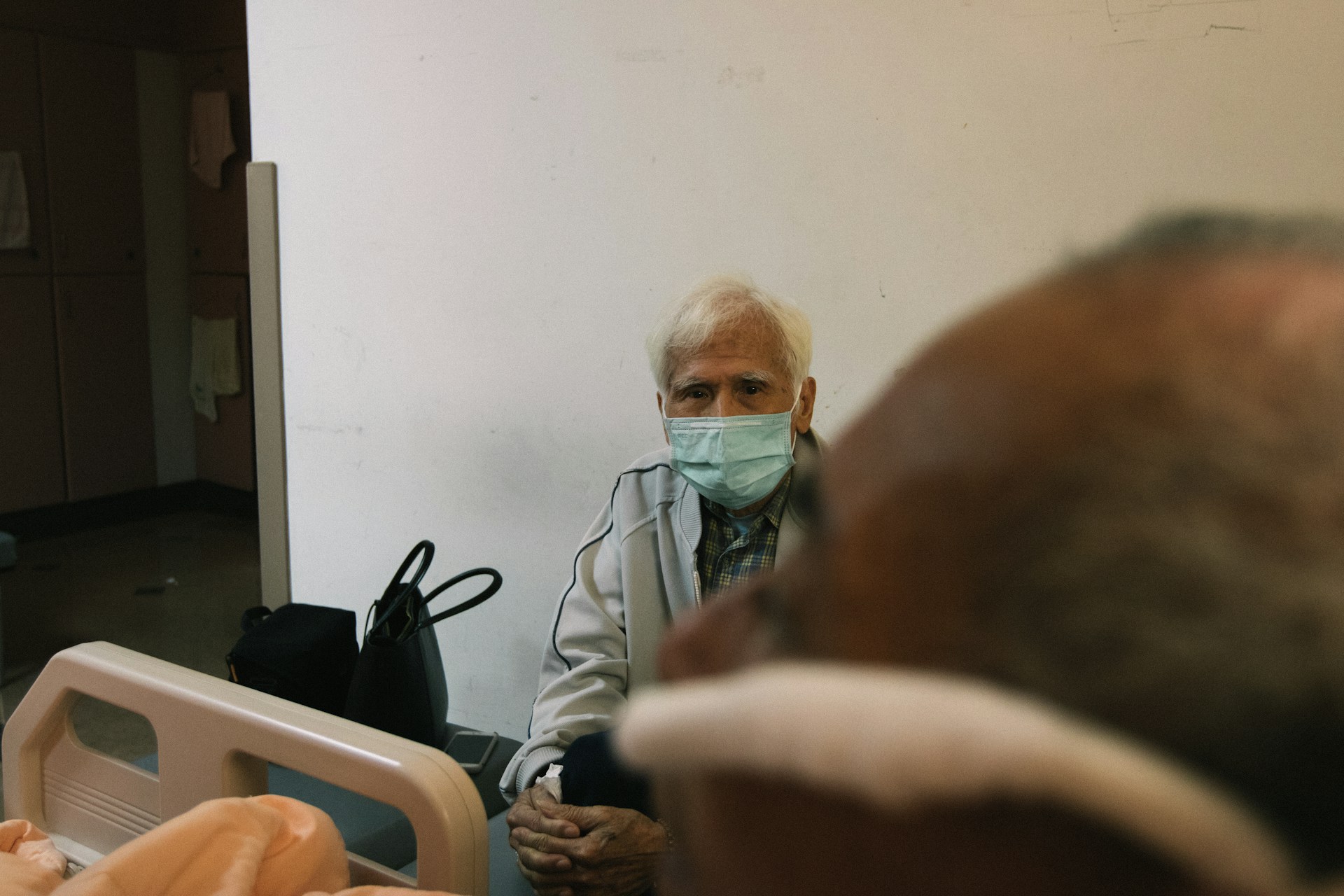Factor associated with Stunting Incidents in Kepyar Village, Purwantoro District, Wonogiri Regency in 2021
Faktor yang berhubungan dengan Kejadian Stunting di Desa Kepyar Kecamatan Purwantoro Kabupaten Wonogiri Tahun 2021
Downloads
Background:The WHO-MGRS (Multicenter Growth Reference Study) recommendations based on the height for age index define stunting as a condition in which the body is short or extremely short. The incidence of stunting among children under five is predicted to reach 21.9% in 2020 by the World Health Organization (WHO). Stunting affects 149.0 million children, who run the risk of developing stunted growth, poor brain development, lower IQ, and disease vulnerability.
Objectives: The study aimed to find out the variables associated with the incidence of stunting in 2021 in Kepyar Village, Purwantoro District, Wonogiri Regency.
Methods:The research design was case-control with a ratio of 1:1 consisting of 22 samples from cases and 22 samples from controls. 22 individuals who were not deemed to be at risk of suffering stunting made up the control sample for toddlers. Between November 2021 and January 2022, the study was carried out. Low birth weight (LBW), birth length, exclusive breastfeeding, mother's last educational level, mother's height, socioeconomic status, accessibility to weaning food, early breastfeeding initiation, and also considered the mother's age at conception were all independent variables. The dependent variable is stunting, which can be either chronic or mild to severe (-2 SD). Fisher's Exact Test was used to analyze this study.
Results: The majority of children were not LBW (90.9%), followed by normal birth length (81.8%), exclusive breastfeeding (56.8%), low education level of the mother (72.7%), mother's height was not at risk (72.7%), early breastfeeding initiation (63.6%), low socioeconomic status (63.6%), proper weaning food (77.3%), and maternal age during pregnancy is not at risk (54.5%). Early initiation of breastfeeding and stunting incidents showed a statistically significant association (p-value of 0.005), then there was also a relationship between socioeconomic status and stunting incidents (p-value of 0.028).
Conclusions:Socioeconomic status and early initiation of breastfeeding are associated with stunting incidents. To lower the frequency of stunting in Kepyar Village, early initiation of breastfeeding promotion needs to be optimized.
Saadah, N. Modul Deteksi Dini Pencegahan Dan Penanganan Stunting. (Scopindo Media Pustaka, 2020).
WHO. Stronger focus on nutrition within health services could save 3.7 million lives by 2025. World Health Organization https://www.who.int/news/item/04-09-2019-stronger-focus-on-nutrition-within-health-services-could-save-3.7-million-lives-by-2025#:~:text=Health services must integrate a,3.7 million lives by 2025. (2019).
Kementerian Kesehatan RI. Situasi Balita Pendek (Stunting) di Indonesia. Pusdatin, Kemenkes RI https://pusdatin.kemkes.go.id/download.php?file=download/pusdatin/buletin/Buletin-Stunting-2018.pdf (2018).
Kementerian Kesehatan RI. Laporan Kinerja Kementrian Kesehatan Tahun 2020. Kementerian Kesehatan Republik Indonesia http://ppid.kemkes.go.id/uploads/img_60e3c13edba9f.pdf (2021).
Kementerian Kesehatan RI. Laporan Nasional RISKESDAS 2018. Badan Penelitian dan Pengembangan Kesehatan https://dinkes.kalbarprov.go.id/wp-content/uploads/2019/03/Laporan-Riskesdas-2018-Nasional.pdf (2018).
Dinkes Jateng. Profil Kesehatan Provinsi Jateng Tahun 2019. Dinas Kesehatan Provinsi Jawa Tengah https://dinkesjatengprov.go.id/v2018/storage/2020/09/Profil-Jateng-tahun-2019.pdf (2019).
WHO. CHILDHOOD STUNTING: Challenges and opportunities. World Health Organization https://apps.who.int/iris/bitstream/handle/10665/107026/WHO_NMH_NHD_GRS_14.1_eng.pdf?sequence=1 (2013).
Nisa, N. S. Kejadian Stunting pada Balita di Puskesmas. HIGEIAJOURNAL PUBLIC Heal. Res. Dev. 4, 595–605 (2020).
Swathma, D., Lestari, H. & Ardiansyah, R. T. Analisis Faktor Risiko BBLR, Panjang Badan Bayi Saat Lahir dan Riwayat Imunisasi Dasar terhadap Kejadian Stunting pada Balita Usia 12-36 Bulan di Wilayah Kerja Puskesmas Kandai Kota Kendari Tahun 2016. J. Ilm. Mhs. Kesehat. Masy. Unsyiah 1, 1–10 (2016).
Trisnawati, M., Pontang, G. S. & Mulyasari, I. Faktor-Faktor Yang Berhubungan Dengan Kejadian Stunting Pada Balita Usia 24-59 Bulan Di Desa Kidang Kecamatan Praya Timur Kabupaten Lombok Tengah. JGK 8, 113–124 (2016).
Sutrio & Lupiana, M. Berat Badan dan Panjang Badan Lahir Meningkatkan Kejadian Stunting. J. Kesehat. Metro Sai Wawai 12, 21–29 (2021).
Handayani, S., Noviana Kapota, W. & Oktavianto, E. Hubungan Status Asi Eksklusif Dengan Kejadian Stunting Pada Batita Usia 24-36 Bulan Di Desa Watugajah Kabupaten Gunungkidul. Med. Respati J. Ilm. Kesehat. 14, 287–300 (2019).
Rahayu, A., Yulidasari, F., Putri, A. O. & Anggraini, L. Study Guide - Stunting dan Upaya Pencegahannya Bagi Mahasiswa Kesehatan Masyarakat. CV MINE (CV MINE, 2018).
Ilmi Khoiriyah, H., Dewi Pertiwi, F. & Noor Prastia, T. Faktor-Faktor Yang Berhubungan Dengan Kejadian Stunting Pada Balita Usia 24-59 Bulan Di Desa Bantargadung Kabupaten Sukabumi Tahun 2019. Promotor 4, 145 (2021).
Yuliana, W. & Hakim, B. N. Darurat Stunting Dengan Melibatkan Keluarga. (Yayasan Ahmar Cendekia Indonesia, 2019).
Dukcapil Wonogiri. Buku Profil Perkembangan Kependudukan. (Dinas Kependudukan Dan Pencatatan Sipil Kabupaten Wonogiri, 2018).
Hanum, N. H. Hubungan Tinggi Badan Ibu dan Riwayat Pemberian MP-ASI dengan Kejadian Stunting pada Balita Usia 24-59 Bulan. Amerta Nutr. 3, 78–84 (2019).
Sentana, L. F., Hrp, J. R. & Hasan, Z. Faktor-Faktor Yang Berhubungan Dengan Kejadian Stunting Pada Anak Usia 12-24 Bulan Di Kelurahan Kampung Tengah Kecamatan Sukajadi Pekanbaru. J. Ibu dan Anak 6, 1–9 (2018).
Raharja, U. M. P., Waryana, W. & Sitasari, A. Status ekonomi orang tua dan ketahanan pangan keluarga sebagai faktor risiko stunting pada balita di Desa Bejiharjo. Ilmu Gizi Indones. 03, 73–82 (2019).
Soetjiningsih & Ranuh, I. N. G. Tumbuh kembang anak. (EGC, 2013).
Haryati, A. C. P. & Mahmudiono, T. Frekuensi Pemberian MP-ASI pada Baduta Stunting dan Non- Stunting Usia 6-24 Bulan Di Wilayah Kerja Puskesmas Sidotopo Kota Surabaya. MEDIA GIZI KESMAS 10, 180–186 (2021).
Yoto, M. et al. Determinan Sosial Penanggulangan Stunting: Riset Aksi Partisipatif Desa Sehat Berdaya Fokus Penanggulangan Stunting. Health Advocacy (Health Advocacy, 2020).
Azis, R., Rifai, M. & Setiahati, N. K. Analisis Faktor Risiko Ibu Dan Anak Balita Terhadap Stunting Di Wilayah Kerja Puskesmas Sangurara. PREPOTIF J. Kesehat. Masy. 5, 870–881 (2021).
Maulidah, W. B., Rohmawati, N. & Sulistiyani. Faktor yang berhubungan dengan kejadian stunting pada balita di Desa Panduman Kecamatan Jelbuk Kabupaten Jember. Ilmu Gizi Indones. 2, 89–100 (2019).
Tsaralatifah, R. Faktor yang Berhubungan dengan Kejadian Stunting pada Baduta di Kelurahan Ampel Kota Surabaya. Amerta Nutr. 4, 171–177 (2020).
Helmiyati, S., Atmaka, D. R., Wisnusanti, S. U. & Wigiati, M. Stunting Permasalahan dan Penanganannya. (Gadjah Mada University Press, 2020).
Cynthia, C., Suryawan, I. W. B. & Widiasa, A. . M. Hubungan ASI eksklusif dengan Kejadian Stunting pada Anak Usia 12-59 bulan di RSUD Wangaya Kota Denpasar. J. Kedokt. Meditek 25, 29–35 (2019).
Siswati, T. Stunting. (Husada Mandiri, 2018).
Trisyani, K., Fara, Y. D., Mayasari, A. T. & Abdullah. Hubungan Faktor Ibu Dengan Kejadian Stunting. J. Matern. Aisyah 1, 189–197 (2020).
Yanti, N. D., Betriana, F. & Kartika, I. R. Faktor Penyebab Stunting Pada Anak: Tinjauan Literatu. REAL Nurs. J. 3, 1–11 (2020).
Nugroho, A. Determinan Growth Failure (Stunting) pada Anak Umur 1 S/D 3 Tahun (Studi di Kecamatan Tanjungkarang Barat Kota Bandar Lampung). J. Kesehat. 7, 470–479 (2016).
Sitompul, E. M. Buku Pintar MPASI Makanan Penunjang ASI 6 Bulan sampai dengan 1 Tahun. (Lembar Langit Indonesia, 2014).
Nurhidayati, T., Rosiana, H. & Rozikhan. Usia Ibu Saat Hamil Dan Kejadian Stunting Pada Anak Usia 1-3 Tahun. Midwifery Care J. 1, 122–126 (2020).
Trihono et al. Pendek (Stuning) Di Indonesia, Masalah Dan Solusinya. (Badan Penelitian dan Pengembangan Kesehatan, 2015).
Copyright (c) 2022 Amerta Nutrition

This work is licensed under a Creative Commons Attribution-ShareAlike 4.0 International License.
AMERTA NUTR by Unair is licensed under a Creative Commons Attribution-ShareAlike 4.0 International License.
1. The journal allows the author to hold the copyright of the article without restrictions.
2. The journal allows the author(s) to retain publishing rights without restrictions
3. The legal formal aspect of journal publication accessibility refers to Creative Commons Attribution Share-Alike (CC BY-SA).
4. The Creative Commons Attribution Share-Alike (CC BY-SA) license allows re-distribution and re-use of a licensed work on the conditions that the creator is appropriately credited and that any derivative work is made available under "the same, similar or a compatible license”. Other than the conditions mentioned above, the editorial board is not responsible for copyright violation.












































